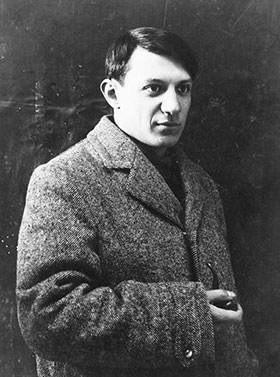- Overview
-
Nicolas Poussin(June 1594 – 19 November 1665) was the leading painter of the classical French Baroque style, although he spent most of his working life in Rome. Most of his works were on religious and mythological subjects painted for a small group of Italian and French collectors. He returned to Paris for a brief period to serve as First Painter to the King under Louis XIII and Cardinal Richelieu, but soon returned to Rome and resumed his more traditional themes. In his later years he gave growing prominence to the landscapes in his pictures. His work is characterized by clarity, logic, and order, and favors line over color. Until the 20th century he remained a major inspiration for such classically-oriented artists as Jacques-Louis David, Jean-Auguste-Dominique Ingres and Paul Cézanne.
- Career
-
- Marion had introduced Poussin to Marcello Sacchietti, a wealthy patron. In the mid 1620s, he also came in contact with Cardinal Francesco Barberini and his secretary Cassiano del Pozzo. All these individuals became patrons of Poussin.
- In 1628, he created his early masterwork ‘The Death of Germanicus’ by utilizing Barberini’s commission.
- Pozzo helped him in securing a commission for ‘The Martyrdom of St. Erasmus’ (1629), an altarpiece for St. Peter’s.
- During the late 1620s and 1630s, he formulated his own style based on his studies of Titian’s ‘Bacchanals’ and the paintings of Domenichino and Guido Reni.
- In 1635–36 he got a major commission from Cardinal Richelieu, first minister to Louis XIII for a series of bacchanals to decorate the cardinal’s estate.
- In the late 1630s, he created the ‘Seven Sacraments’ for Philip IV, the king of Spain. In 1638 he created one of his masterpieces, ‘The Israelites Gathering the Manna’ for Paul Fréart de Chantelou, his greatest patron.
- In the later years of 1640, he produced some of his greatest figure paintings like ‘Eliezer and Rebecca’, ‘The Holy Family on the Steps’, and ‘The Judgment of Solomon’.
- Poussin went back to Rome in 1642 and six years later, finished the second series of ‘The Seven Sacraments’.
- In 1649–50 he also painted two self-portraits in which he was dressed like the ancients.
- Marion had introduced Poussin to Marcello Sacchietti, a wealthy patron. In the mid 1620s, he also came in contact with Cardinal Francesco Barberini and his secretary Cassiano del Pozzo. All these individuals became patrons of Poussin.
- Legacy
-
In the years following Poussin's death, his style had a strong influence on French art, thanks in particular to Charles LeBrun, who had studied briefly with Poussin in Rome, and who, like Poussin, became a court painter for the King and later the head of the French Academy in Rome. Poussin's work had an important influence on the 17th-century paintings of Jacques Stella and Sébastien Bourdon, the Italian painter Pier Francesco Mola, and the Dutch painter Gerard de Lairesse.
During the French Revolution, Poussin's style was championed by Jacques-Louis David in part because the leaders of the Revolution looked to replace the frivolity of French court art with Republican severity and civic-mindedness. The influence of Poussin was evident in paintings such as Brutus and Death of Marat. Benjamin West, an American painter of the 18th century who worked in Britain, found inspiration for his canvas of The Death of General Wolfe in Poussin's The Death of Germanicus.
Cézanne appreciated Poussin's version of classicism. "Imagine how Poussin entirely redid nature, that is the classicism that I mean. What I don't accept is the classicism that limits you. I want that a visit to a master will help me find myself. Every time I leave a Poussin, I know better who I am."
In the 20th century, some art critics suggested that the analytic Cubist experiments of Pablo Picasso and Georges Braque were also founded upon Poussin's example. In 1963 Picasso based a series of paintings on Poussin's The Rape of the Sabine Women. André Derain, Jean Hélion, Balthus, and Jean Hugo were other modern artists who acknowledged the influence of Poussin.
- On View
-
- Dulwich Picture Gallery, London
- The Louvre, Paris
- J. Paul Getty Museum, Los Angeles
- Rijksmuseum, Amsterdam
- National Gallery of Art East Building, Washington D.C.
- Chateau de Chantilly, Chantilly(France)
- Harvard Art Museums, Cambridge
- Hermitage Museum, Saint Petersburg
- Walker Art Gallery, Liverpool
- Kimbell Art Museum, Fort Worth
- Minneapolis Institute of Art, Minneapolis
- Gemaldegalerie Alte Meister, Dresden
- Detroit Institute of Arts, Detroit
- Wallance Collection, London
- Nelson-Atkins Museum, Kansas City
- Kunsthistorisches Museum, Vienna
- Museum of Fine Arts, Boston
- Israel Museum, Jerusalem
- Albertina, Vienna
- Museum of Fine Arts of Lyon
- Morgan Library and Museum, New York City
- Stadel Museum, Frankfurt
- National Gallery, London










.jpg)




